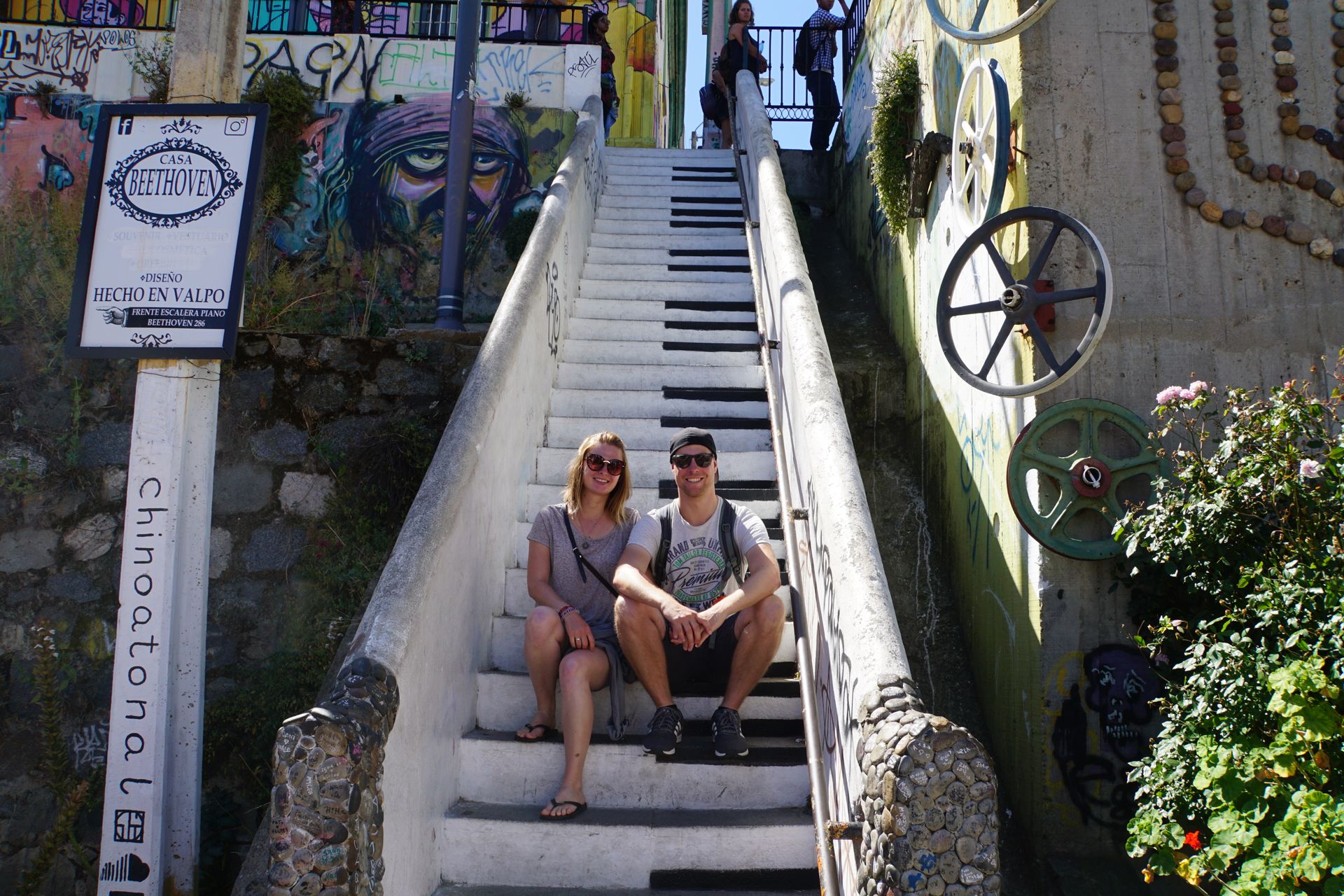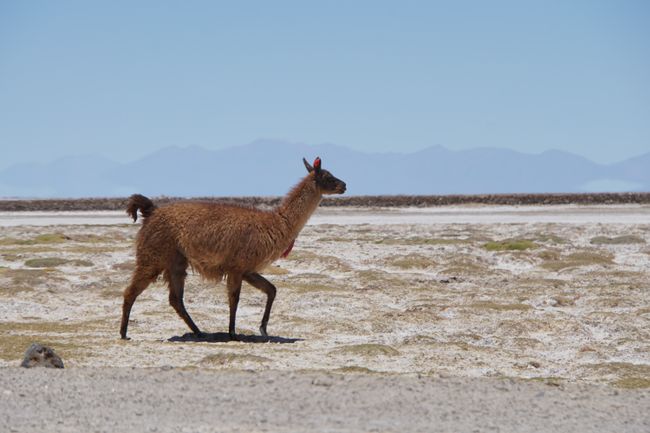Whale Watching and Winetasting
Buga: 05.03.2019
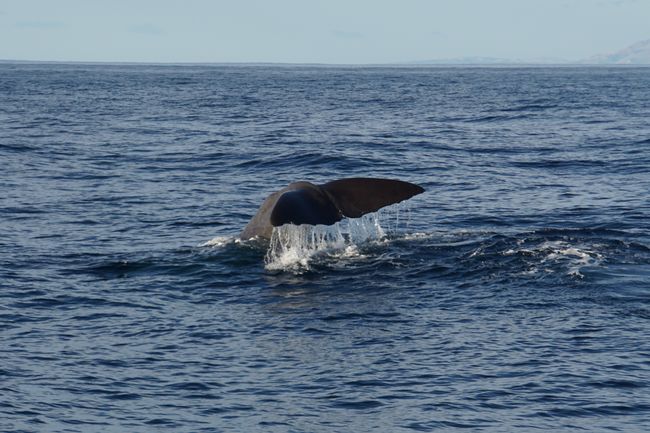
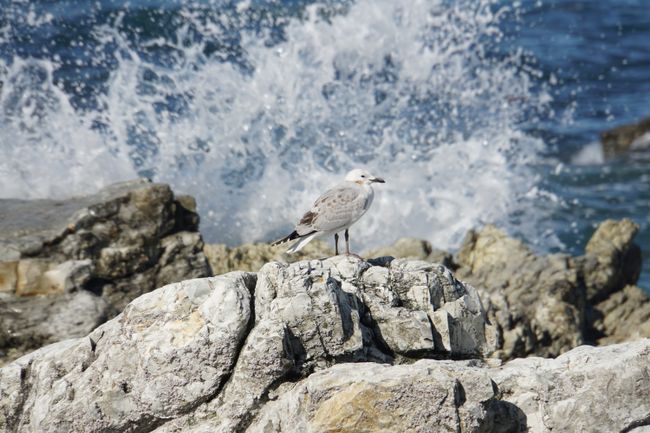
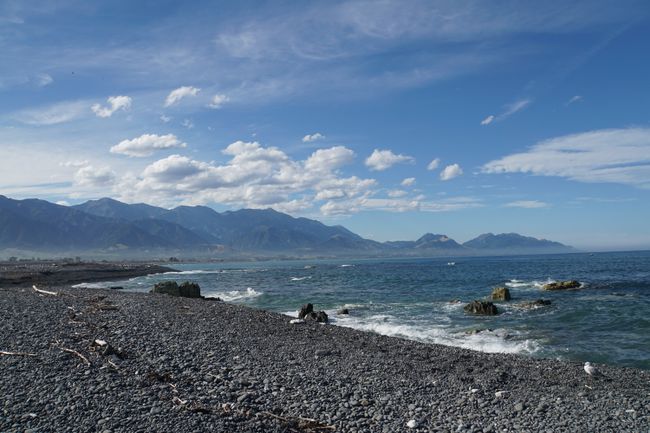
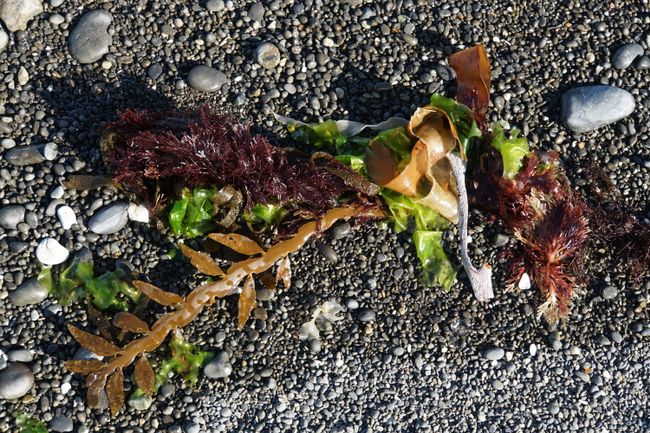
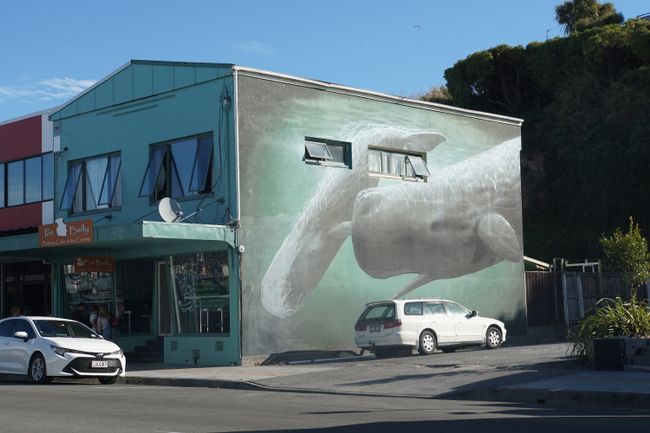
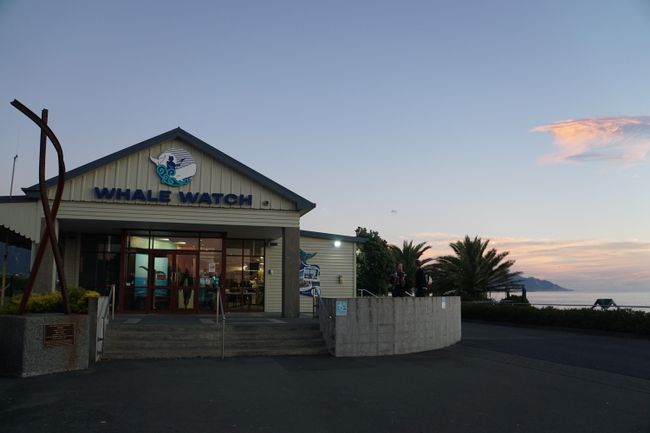
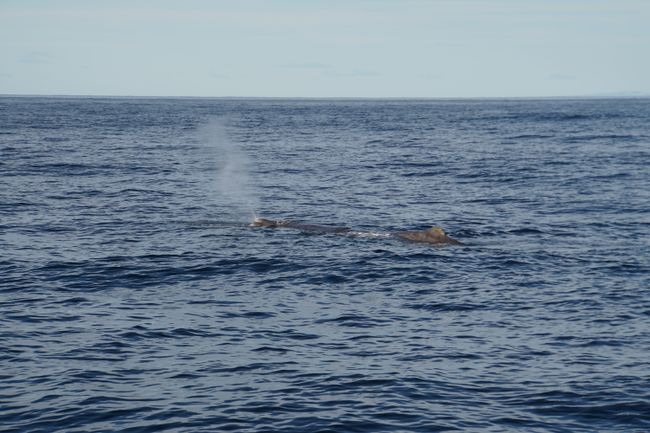
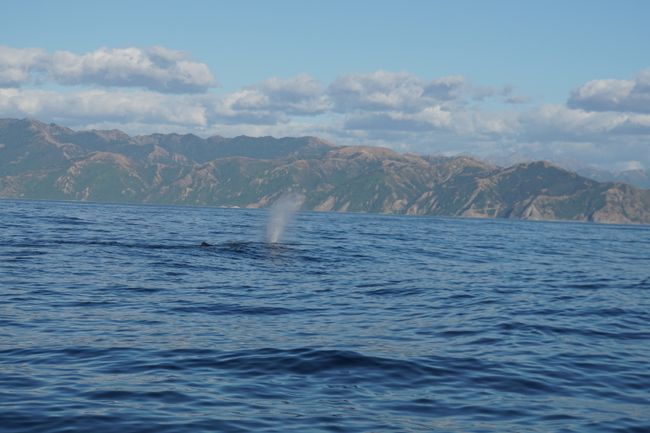
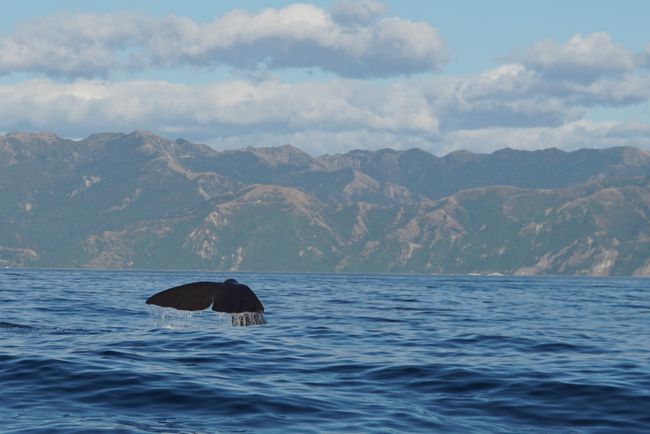
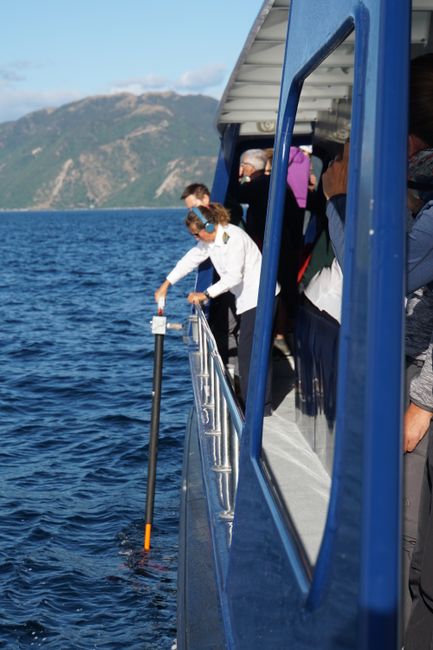
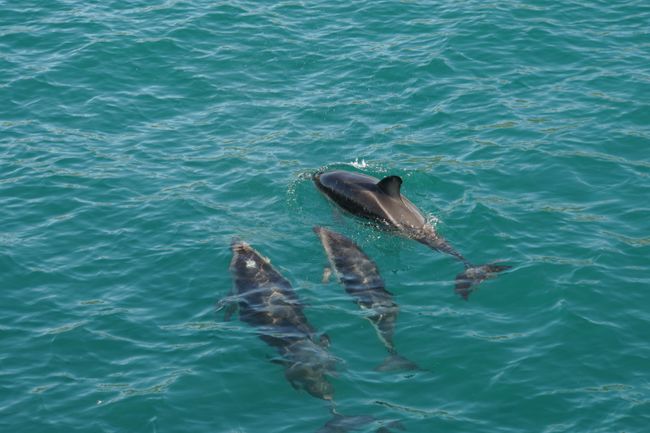
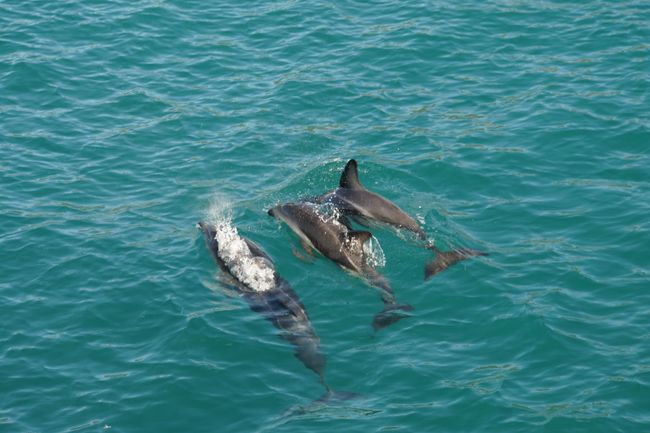
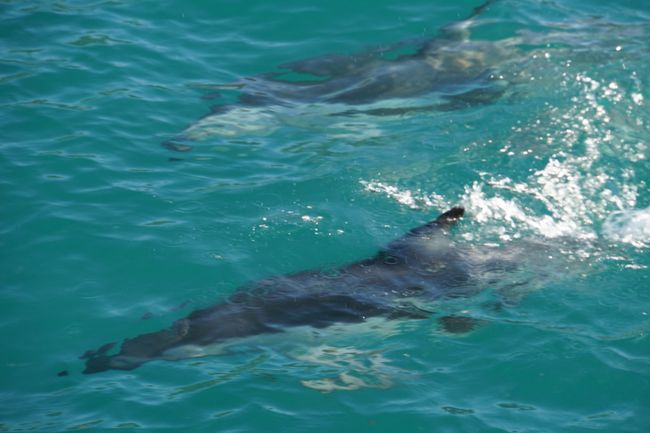
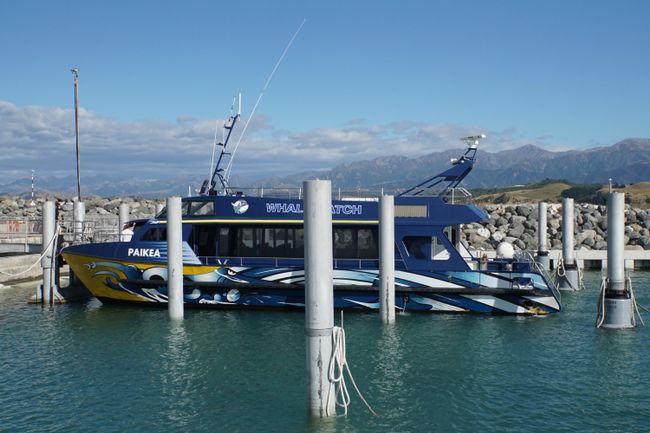
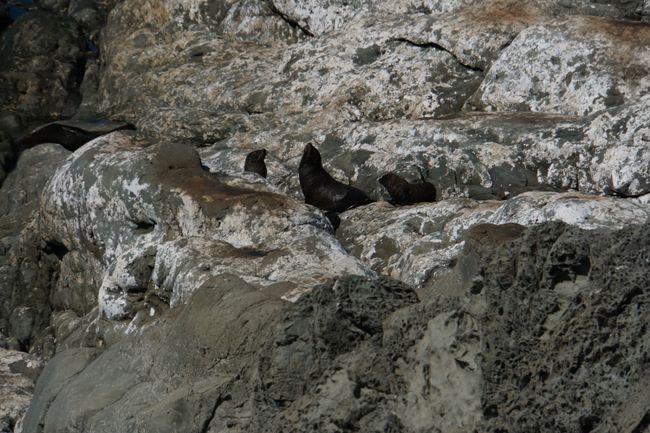
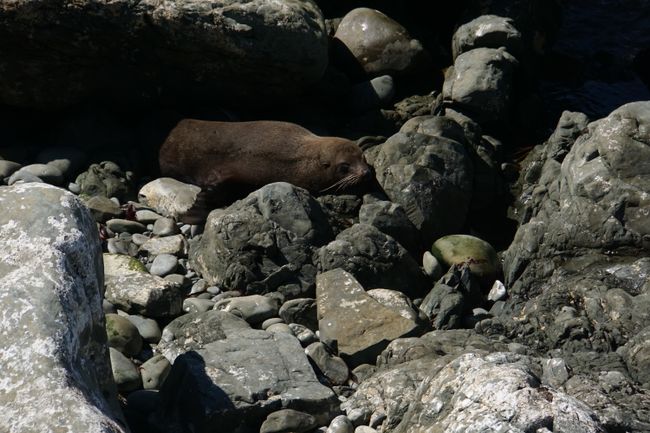
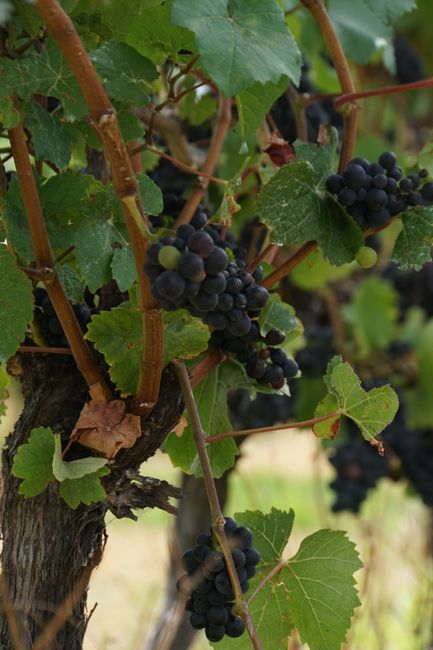
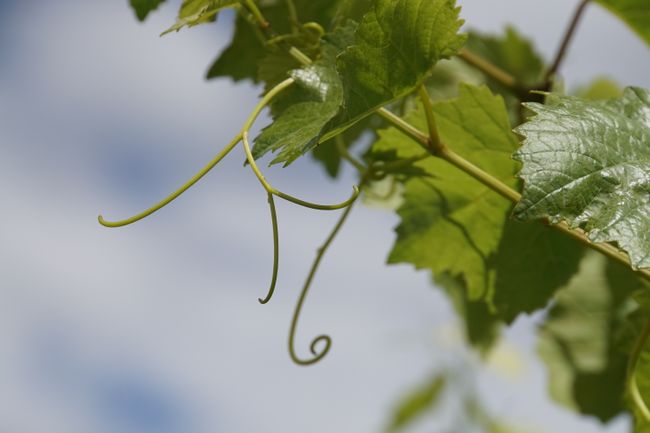
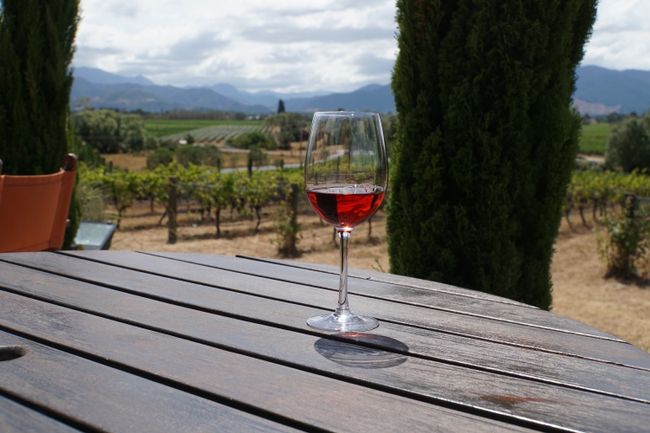
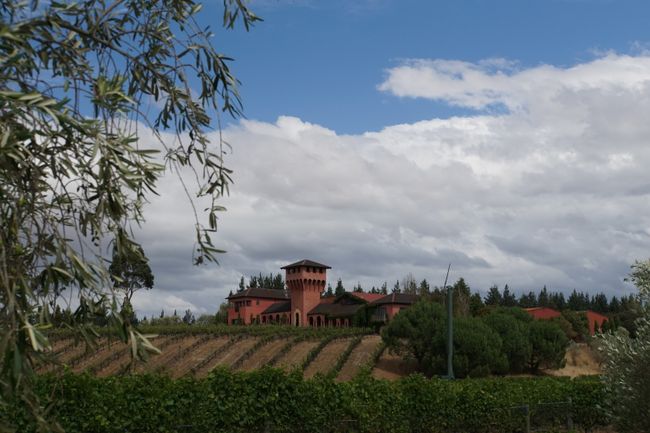
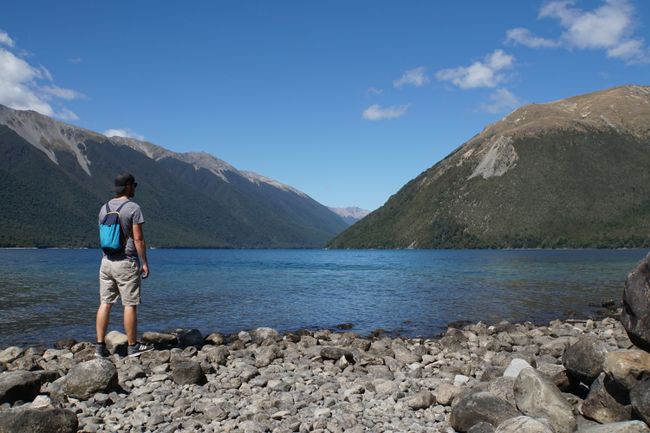
Biyan kuɗi zuwa Newsletter
After our arrival in Picton on the South Island, we will drive to Kaikoura, which is two hours away, in the same afternoon. There, we will go on a Whale Watching tour and observe sperm whales the next morning. The tour promises a 95% success rate, and in case no whale is sighted, there is a money-back guarantee. That sounds promising! Otherwise, Kaikoura doesn't have much to offer, it's just a typical place that lived off whaling. Nowadays, it seems that the main source of income is still whaling, but in a good way. Because Kaikoura thrives on tourism that was created by Whale Watching and swimming with dolphins.


Since we have booked the earliest possible tour, we are already at the visitor center just before 7 a.m. and can watch the magnificent sunrise. Today the weather is perfect and as we will learn later, it is a very calm day at sea.
After a short introduction and the obligatory safety instructions, we finally set off! At first, we drive away from the mainland to the open sea for about 10 minutes. There, our captain puts a sonar into the water to locate the sperm whales. Since sperm whales orient themselves with the help of echolocation (like bats), they can be tracked down with the help of the sonar, or it gives an indication of the direction in which an animal is located.

Afterwards, our assistance is required. All passengers are now on deck and keeping an eye out for the typical 45° spouts of the whales, which are visible one to two kilometers away. After just a few minutes, our whale spotter Nicky calls out 'Whale up' and we speed towards the direction where a small white spout was sighted.

And indeed, there is a whale swimming on the surface, regularly breathing in and out through its blowhole. It is a quite impressive sight, even though only about a third of the whale is visible and it is a young male. They come to the coast of New Zealand in their adolescence, about 10 years old, to grow and get fat, as male whales are not allowed to mate until they are fully grown. These animals can reach a length of 15-20m, a weight of 40-60 tons, and an age of 70 years!
The coast of Kaikoura offers the best conditions for the young male whales to reach their fighting weight, thanks to a geological rarity that is also so close to the coast. Because here the seabed drops very quickly and very deep. Already 500m away from the mainland, it is over a kilometer deep, Kaikoura is located right next to an underwater canyon. In the waters up to 1,600m deep, the young sperm whales find plenty of squid, grouper, tuna, black shark, and kingfish to grow. By the way, the sperm whale is the fourth-largest whale on earth and the largest of the so-called toothed whales (the other suborder of whales are the baleen whales, which filter krill and other food from the water with their baleen plates in their jaws). A single tooth can grow up to 20cm long and weigh one kilogram. The teeth are used by the whale for fishing. The jaw snaps similar to that of a crocodile. Our guide tells us that sperm whales have quite large scars on their bodies due to their diet (squid), as the squid do not surrender without a fight and cling to the whales.
We learn all this while observing the young teenager. Shortly before the whale dives again, our guide Jack tells us, and we get ready to photograph the classic big whale fin.
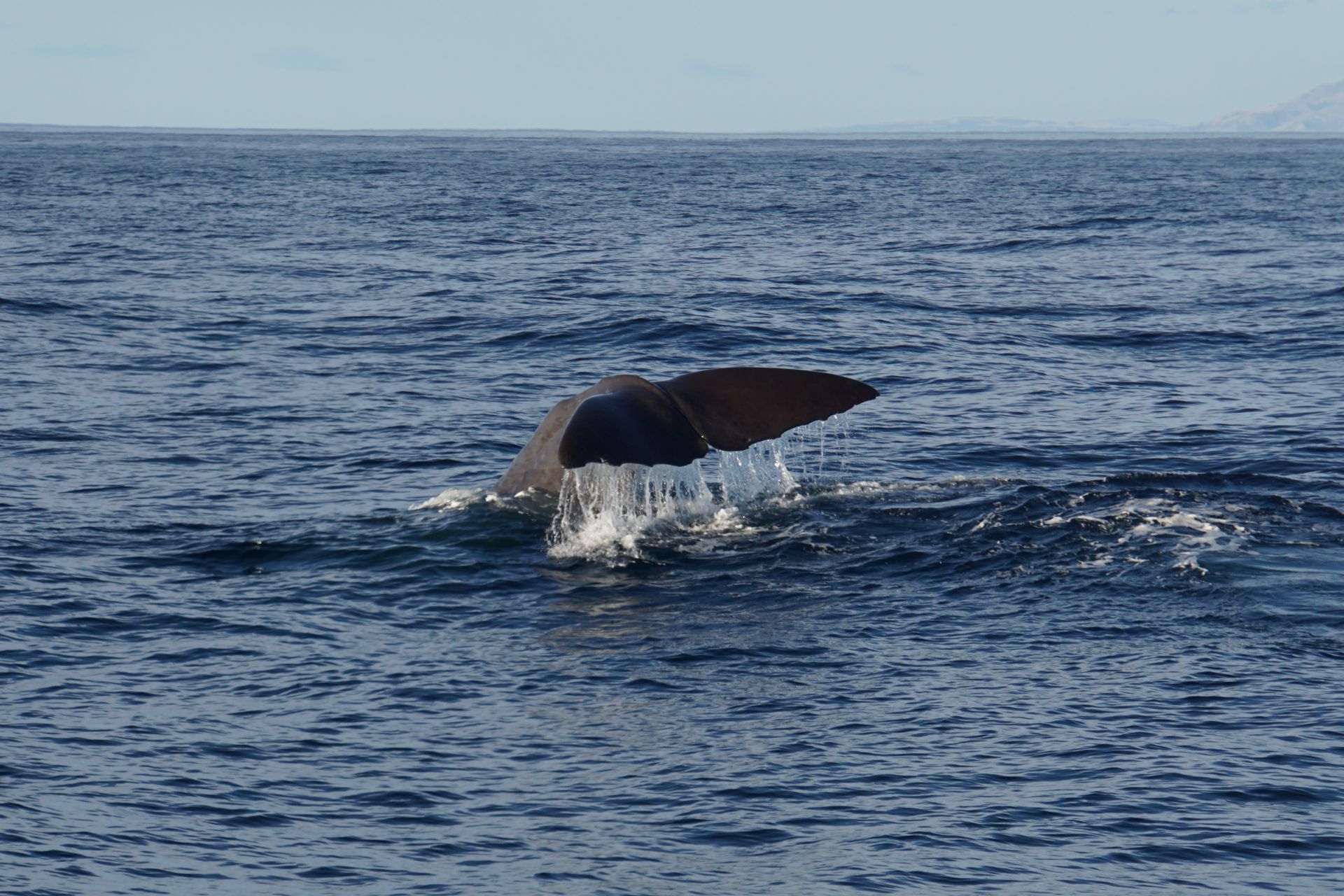
The whale's fin leaves behind a large swirl of water when diving. This is not surprising since the sperm whale has the strongest muscle of any animal on earth. One strike of the tail releases the power of 500 horsepower! Yes, you read that right: five hundred! Therefore, even in heavy seas, the swirl of water remains visible on the water surface for a long time.


We hear over the radio from one of the dolphin tour boats that they have spotted another whale spout, likely from a smaller whale, and we head in the direction given. Unfortunately, we are not lucky this time. The mentioned spout was probably from a baleen whale. These whales are harder to locate because they cannot be tracked with sonar and often only briefly stay at the water surface to breathe. This reduces the chances of finding such a baleen whale, like the blue whale for example. Sperm whales, on the other hand, stay at the water surface for five to fifteen minutes and can be located with sonar. That explains the 95% success rate of the Whale Watch Company. When the whales are not at the surface, they dive for 40-60 minutes in depths of over 1,000m. The sperm whale can even stay underwater for up to two hours and dive to depths of up to 3,000m! It is one of the deepest-diving mammals on earth.
Even though we don't see any more whales on the tour, we are lucky to come across a group of dusky dolphins that happily accompany our boat.
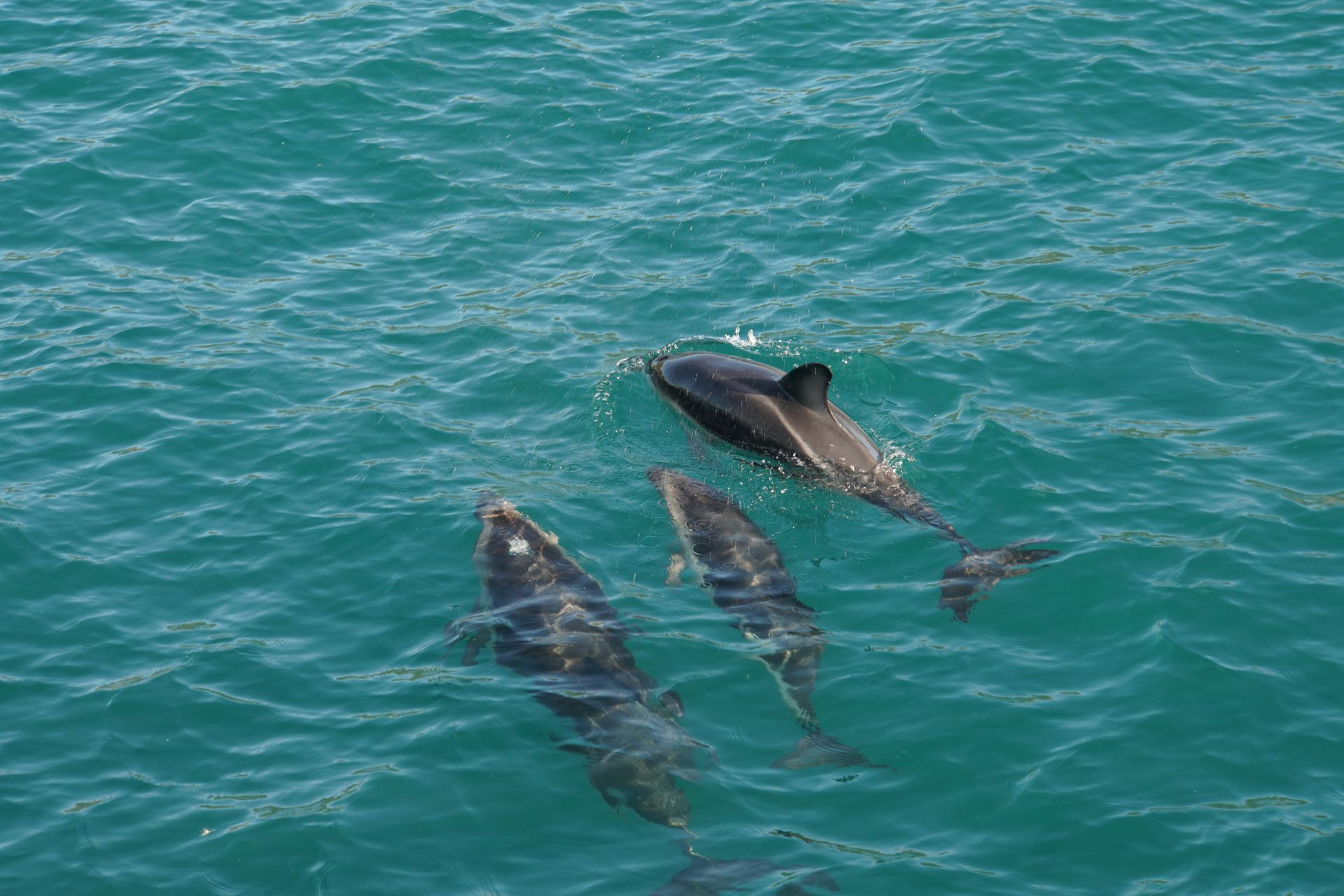
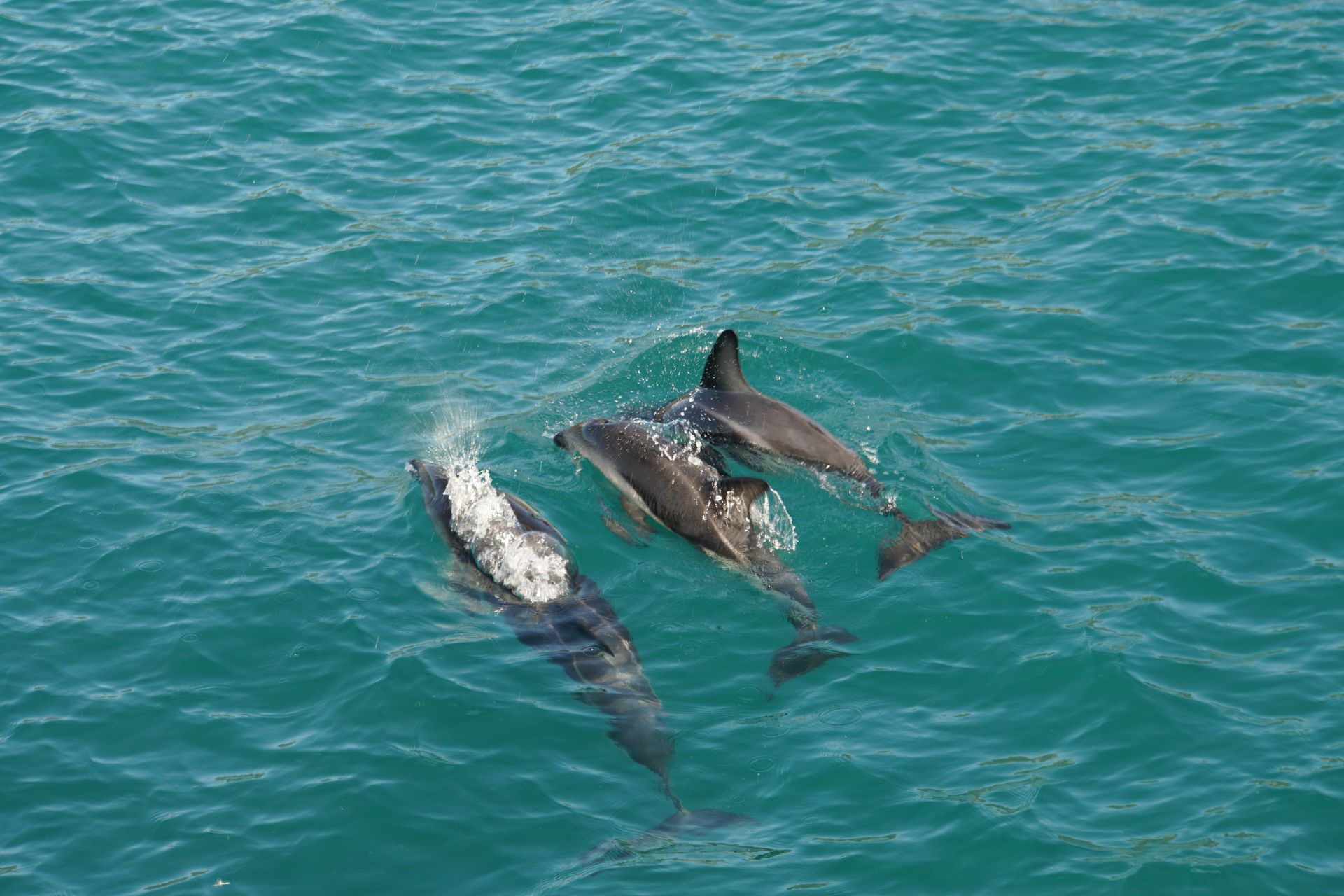
We are definitely impressed by today's tour. It was definitely worth it! In addition, the tour supports the conservation of whales and the preservation of the whale habitat in Kaikoura. Furthermore, we liked that at the end of the tour, it was pointed out that everyone should reduce plastic consumption. Although the whale is the largest mammal on earth, many whales, especially baleen whales, feed on krill and do not need large esophagi. And so, such a large animal can actually choke on a 1L plastic bottle. Unfortunately, too much plastic ends up in the oceans year after year! We were reminded of this daily, especially in South America. Our tap water has such high quality that at least these plastic bottles can be saved and replaced with glass bottles or other durable bottles. In New Zealand too, so we feel a bit better with our reusable bottles.
Since the day is still young, we now drive to Blenheim and Renwick, two towns in the Marlborough wine region. On the way there, we drive past a rocky coast where various sea lions with their young ones frolic and lazily sunbathe.


It is already half past one and we are getting hungry. Arriving at the Highfield winery, which sits like a small castle in Tuscany above its vineyards, we have a light lunch, of course, try the house wine and buy two bottles of wine for the rest of our trip.


Afterwards, we have another wine tasting. We like the Riesling the best, which is grown here by adventurous young winemakers (it reminds us of the Moselle region). Savignon Blanc and Chardonnay both smell very good but are too acidic for our taste - a truly upside-down world here in New Zealand. On the way to our campground for the night, we pass by a chocolatery. We can't resist and buy some chocolates to try!
The next day, we want to spice up our long drive to Abel Tasman National Park a bit and take a walk at the idyllic Lake Rotoiti. When we arrive, we quickly realize that there is a speedboat race taking place on the lake that day - impossible to miss with the completely overcrowded parking lot. The idyll quickly fades due to the infernal noise (it sounds like standing right next to a departing Airbus A380) caused by the speedboats. But we still find a quiet spot to take a photo.

Despite the noise, the path along the lake was quite nice (or maybe because of it), and the movement was good as we had spent the rest of the day in the car. Tomorrow we will head to Abel Tasman National Park, where we want to hike along the golden beaches.
Biyan kuɗi zuwa Newsletter
Amsa

Rahoton balaguro New Zealand
